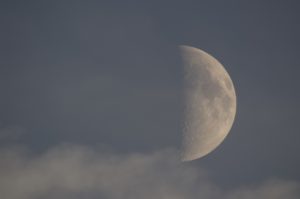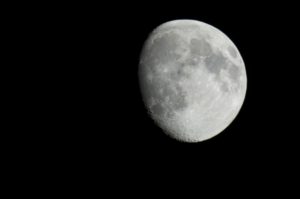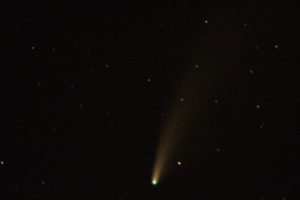My Blog
11/1/2014
I found an auction sale and purchased a Meade 10” LX200. It came with a tripod and many camera accessories. Lacking a dedicated astronomical camera I started with visual observing and a Nikon D5300 DSLR.
2015 – 2016
9/2015
Prior to my Meade purchase I did some moonshots with a Nikon birding field scope. I also made a couple attempts with my Nikon and a telephoto 70-300mm zoom lens. I found alignment, focus and the field of view to be difficult.
The Meade came with camera accessaries for Eyepiece Projection and Prime Focus which I decided to try.
With Prime Focus your camera body attaches directly to the scope with no intervening lens. The scope then becomes your camera lens.
To do eyepiece projection you place a device over the scope eyepiece which holds the camera body. Both methods work well but require quite a bit of fiddlin
Prime Focus cannot be magnified but Eyepiece Projection depends on the focal length of the eyepiece for magnification
.Screen Recording 2020-12-19 at 12.01.22 AM
Click to play this 1 minute movie done with live analog frame averaging .
I next tried analog video with surveillance cameras then one called Revolution2. The video can be output to any analog TV. The signal can be edited with software built into the camera. The cameras also do rudimentary stacking called “averaging”. This method enhances DSOs or planets with a small 1/3” color chip. The image will go from invisible to full color and brightness in a few seconds. Recording at 60 frames /sec. helps them work well with planetary work.
This signal can also be digitized and edited or screen captured with software such as QuickTime or SharpCap.
The Revolution2 video menus can also be manipulated with remote control .
3/2016
The original tripod rig quickly became too heavy to move assembled and takes too long to set up for each session. I then built a cart that allows setup in less than 15 minutes.
7/2017
Later I purchased a QHY CMOS color video 16 mp camera with a 4/3 sensor. It produces stills for post processing and video for live stacking.
Spring 2018
Next came my home “observatory” on a patio pad and pier with a wedge equatorial mount. The wedge turns an Alt /Az mount to an Equitorial mount. This facilitates tracking and cuts setup to less than 5 minutes.
4/19/2019
Electric was added the next spring.
I soon realized a need for more portable rig for traveling to dark sites and winter vacations.
11/2018
I found a Celestron Evolution C8 with Starsense on a tripod that I could easily transport and setup.
2/1/20
I’m quickly losing my tolerance for cold weather so we started looking for a winter observing home.
Our search of southern New Mexico and Arizona brought us to Rusty’s Astro RV ranch located in Rodio NM .
It is next to Arizona Sky Village, home to many astronomers near Portal AZ, on the state border, 50 miles from the Mexican border and the town of Douglas, Az.
It is truly a home for amateur astronomers. The area is dotted with many observatories. Astronomers have a weekly breakfast in Portal.
Rusty’s hosts biweekly Pot luck dinners for the campground astronomers.
5/30/20
Corona virus caused a year long stay at home in Custer so I’m planning on adding a Skyshed observatory on my property.
7/20/2020
Comet watching with a DSLR was the big hit this year.








